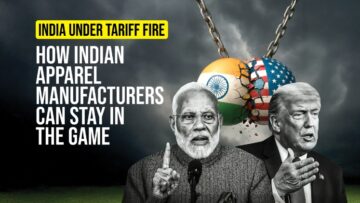Sri Lanka’s garment sector is set to gain increased duty-free access to the UK market with the country’s move to implement sweeping reforms in its Developing Countries Trading Scheme (DCTS). The reforms will allow Sri Lankan producers to source all garment inputs around the world, as long as final assembly is done locally.
The new rules of origin, set to take effect in early 2026, will remove the limits that had earlier restricted sourcing opportunities and placed greater burdens on local processing requirements. Under the reform, Sri Lanka’s preferential access will now reflect the more favourable treatment that is already accorded to less-income exporters like Bangladesh.
“These changes to the DCTS are to be welcomed. As a result of discussions with the JAAF, Sri Lankan producers, and UK retailers, I am confident that the changes will have a very positive impact on Sri Lanka’s garment industry as well as assisting in lowering prices for British consumers,” British High Commissioner to Sri Lanka Andrew Patrick said in a statement.
The Joint Apparel Association Forum (JAAF) welcomed the UK’s move, while President of the Council for Business with Britain Mark Surgenor called it a “success story” for Sri Lankan apparel exports. He pointed out that the new framework will enable more of Sri Lanka’s exports to meet the requirements for zero tariffs, and deepen the two nations’ trade relationships.
In addition to clothing, the UK in June also announced the creation of an Asia Regional Cumulation Group of 18 nations—India, Pakistan, Vietnam, Bangladesh, Sri Lanka being among them. The agreement will ensure that inputs imported from any one of these nations will be considered as originating in Sri Lanka under DCTS regulations, as long as final processing is done locally, ensuring greater regional supply-chain integration while maintaining tariff-free access.
The step comes at a crucial time for Sri Lanka, a leading supplier of garments to the UK outside South Asia but still subject to stiff competition from local rivals with cheaper production costs. Relaxing regulations, the reforms are likely to strengthen the competitiveness of the industry and aid its revival in the face of Sri Lanka’s continued economic troubles.
Under the current system, tariff-free entry into the UK necessitated that inputs be imported from South Asia and go through a “double transformation” process, such that both fabric and garment making should take place locally.
The UK continues to be Sri Lanka’s second-largest apparel export market after the US, with imports worth US$1.3 billion in 2024, as per official statistics.







